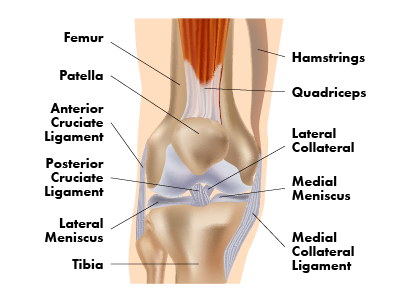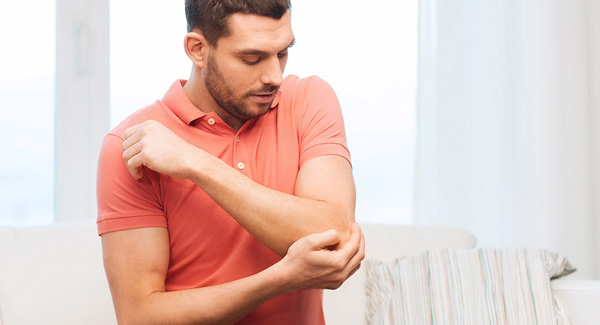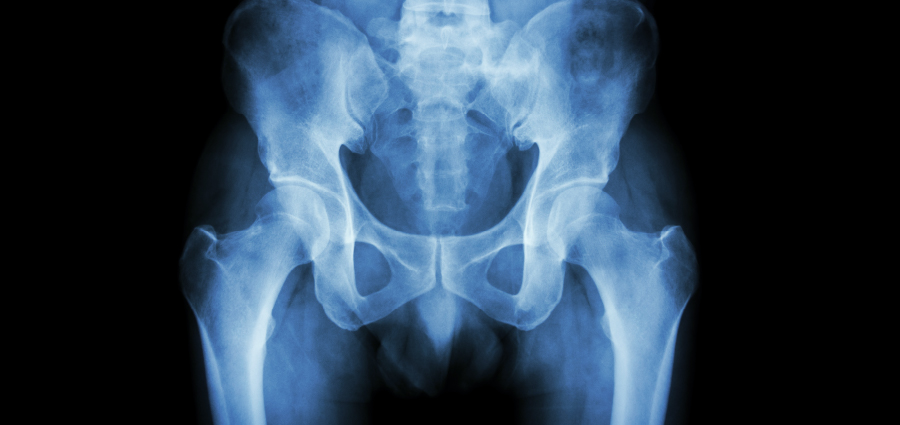Anatomy of the Knee
An inside look at the structure of the knee.
 The knee is the joint where the bones of the lower and upper legs meet. The largest joint in the body, the knee moves like a hinge, allowing you to sit, squat, walk or jump.
The knee is the joint where the bones of the lower and upper legs meet. The largest joint in the body, the knee moves like a hinge, allowing you to sit, squat, walk or jump.
The knee consists of three bones:
- femur – the upper leg bone, or thigh bone
- tibia – the bone at the front of the lower leg, or shin bone
- patella – the thick, triangular bone that sits over the other bones at the front of the knee, or kneecap.
The ends of the bones are covered with a layer of cartilage, a slick, elastic material that absorbs shock and allows the bones to glide easily against one another as they move.
Between the tibia and femur bone are two crescent-shaped pads of cartilage that reduce friction and disperse the weight of the body across the joint. They are:
- The lateral meniscus, situated at the outside of the knee.
- The medial meniscus, situated on the inside of the knee.
The bones are held together by a joint capsule, which consists of two distinct layers – an outer layer of dense connective tissue and an inner membrane, called the synovium, which secretes a fluid to lubricate the joint.
This article takes the mystery out of medical terms and helps you understand what’s really happening inside your joint. When you support the Arthritis Foundation, you help ensure people everywhere can crack the code on the mysteries of arthritis. Give today!
The outer layer of the capsule is attached to the ends of the bones and is supported by these ligaments and tendons:
- quadriceps tendon, which attaches the quadriceps to the patella
- medial collateral ligament (MCL), which gives stability to the inner part of the knee
- lateral collateral ligament (LCL), which stabilizes the outer part of the knee
- anterior cruciate ligament (ACL), which is located in the center of the knee and prevents excessive forward movement of the tibia
- posterior cruciate ligament (PCL), which is located in the center of the knee and prevents excessive backward shifting of the knee.
Two groups of muscles support the knee. They are:
- Hamstrings – muscles on the back of the thigh, which run from the hip to just below the knee and work to bend the knee.
- Quadriceps – four muscles on front of the thigh that run from the hip to the knee and straighten the knee from a bent position.

Stay in the Know. Live in the Yes.
Get involved with the arthritis community. Tell us a little about yourself and, based on your interests, you’ll receive emails packed with the latest information and resources to live your best life and connect with others.


.jpg?width=600&height=283&ext=.jpg)